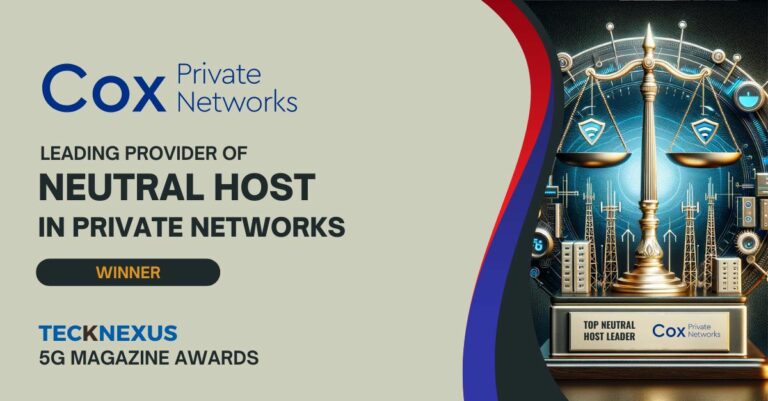Introduction to 5G in Manufacturing
5G, the fifth generation of cellular network technology, is an evolutionary step in the realm of industrial connectivity. Building on the foundation laid by 4G and LTE networks, 5G brings enhancements that are more evolutionary than revolutionary for the manufacturing sector. It offers increased data transmission speeds, reduced latency, and the capacity to connect a higher number of devices simultaneously. However, the practical impact of these improvements in manufacturing should be viewed through a pragmatic lens.
From 4G to 5G: A Gradual Transition
The transition from 4G LTE to 5G in the manufacturing sector is not an overnight transformation but a gradual evolution. While 5G does provide faster data speeds and lower latency compared to 4G, the real-world impact on manufacturing processes may vary. Existing 4G networks already support a significant amount of automation and connectivity in manufacturing. Thus, for many applications, the shift to 5G will bring incremental improvements rather than dramatic changes.
The Realistic Role of 5G in Manufacturing
The role of 5G in manufacturing is best understood as a facilitator for enhancing existing processes rather than a catalyst for a complete overhaul. Key areas where 5G can provide tangible benefits include:
- Enhanced Data Management: Faster data speeds mean quicker transmission of large volumes of data, which can aid in more efficient data management and analysis.
- Improved Connectivity for IoT Devices: 5G can support a more extensive network of IoT devices, which may lead to better monitoring and control within the manufacturing process.
- Potential in Specific Applications: Certain areas, such as real-time monitoring and control, where latency is critical, may see more notable benefits from 5G.
The 2021 study by the Manufacturers Institute highlights the growing significance of 5G technology in the manufacturing industry:
- Critical Role of 5G: A significant 91% of manufacturers consider 5G connectivity crucial for the future of their business, with 61% rating it as “extremely important.”
- Impact on Global Competitiveness: The deployment speed of 5G is viewed as vital for maintaining global competitiveness by 91% of manufacturers, with 62% expecting a substantial positive impact.
- Business Operations and Processes: A majority of manufacturers (92%) believe 5G will enhance their current business practices, and 88% expect it to advance their existing processes.
- New Opportunities with 5G: Around 88% foresee the use of 5G leading to new processes, and 86% anticipate it will create new business opportunities.
Considerations for Adoption
Manufacturers considering the adoption of 5G should weigh the benefits against the cost and practicality of implementation. Factors such as the existing network infrastructure, the specific needs of the manufacturing process, and the cost of upgrading equipment and systems are crucial in deciding whether and how to integrate 5G technology.
The Evolution of 5G in Manufacturing
The journey of 5G in the manufacturing sector is marked by gradual adoption rather than a sudden shift. This evolution began with the foundational technology of 4G and LTE, which initially brought connectivity improvements to manufacturing. As 5G emerged, it promised further enhancements, but its integration into manufacturing has been a process of measured assessment and implementation rather than a rapid transformation.
The Role of 5G in Modern Manufacturing
While 5G offers higher speeds and lower latency compared to its predecessors, its role in manufacturing should be viewed as part of a broader digital transformation strategy rather than a standalone solution. The technology’s potential lies in its ability to improve existing processes and systems. For instance, 5G can enhance the efficiency of IoT devices used in manufacturing, leading to better data collection and analysis. However, the extent of these improvements largely depends on the specific use cases and existing infrastructure.
Balancing Expectations with Practicality
In evaluating the role of 5G in manufacturing, it’s essential to balance the optimism about its potential with a realistic understanding of its practical impact. While 5G certainly opens up new possibilities, such as more efficient machine-to-machine communication and improved automation, the transition from 4G to 5G does not necessarily equate to a manufacturing revolution. Instead, it should be seen as an evolutionary step that can contribute to incremental improvements in manufacturing processes.
Challenges in Integrating 5G
Integrating 5G into manufacturing is not without its challenges. These include:
- Infrastructure Upgrade Costs: Upgrading to 5G can be a significant investment, as it often requires new hardware and network infrastructure. As per a 2021 study by the Manufacturers Institute, 51% of manufacturers identify cost as a primary challenge in implementing wireless technologies.
- Compatibility with Existing Systems: Ensuring that 5G technology is compatible with existing manufacturing systems and processes can be complex. The same study from the Manufacturers Institute also noted that compatibility with existing systems is a challenge for 31%.
- Skill Gaps: The adoption of 5G might require upskilling employees or hiring new talent familiar with the latest technology.
- Security Concerns: As with any technological advancement, 5G brings new cybersecurity challenges that manufacturers need to address.
The Gradual Integration of 5G
The integration of 5G into manufacturing is expected to continue at a steady pace. As manufacturers increasingly embrace digital transformation, 5G will likely play a significant role in facilitating these changes. However, the extent and speed of its adoption will vary across different sectors within the industry, depending on specific needs, budgets, and existing technological infrastructure.
The Specific Impacts of 5G on Manufacturing Operations
5G technology, while not revolutionary, is set to make significant contributions to the manufacturing industry, particularly in enhancing operational efficiency and supporting the integration of advanced technologies.
- Data-Driven Decision Making: With its high-speed data transmission, 5G facilitates more efficient data collection and analysis. A study by Ericsson found that 5G-enabled real-time analytics could reduce downtime and improve production efficiency, crucial for just-in-time manufacturing models.
- Optimizing IoT Integration: The ability of 5G to connect a large number of devices simultaneously makes it ideal for IoT applications in manufacturing. According to a report by Market and Markets, the integration of IoT devices powered by 5G is expected to streamline operations, from inventory tracking to quality control.
- Enhancing Supply Chain Management: 5G’s real-time data transmission can improve supply chain visibility and responsiveness. For example, a report by the Manufacturers Institute highlighted that 5G could increase automation and enable new applications in supply chain management, leading to more efficient and agile operations.
Realistic Benefits and Limitations in Industrial Applications
While 5G brings several benefits, its impact varies depending on the specific industrial application and the existing infrastructure.
- Predictive Maintenance: 5G’s low latency enables more effective predictive maintenance of equipment. Real-time data transmission allows for immediate identification and resolution of potential issues, reducing downtime. As per the Ericsson study, this can lead to a reduction in the need for spare parts by up to 10%.
- Remote Operations and AR: The reliability and speed of 5G support advanced remote operation capabilities and AR applications. In fields like aerospace and automotive manufacturing, where precision is paramount, AR assisted by 5G can aid in complex assembly processes, as indicated by recent industry trends.
- Limitations: The full benefits of 5G are contingent on the overall digital maturity of the manufacturing plant. Older facilities may require significant upgrades to infrastructure to leverage 5G effectively. Additionally, the cost of implementing 5G and training staff should be weighed against the expected ROI.
Unique Features of 5G Relevant to Manufacturing
- Ultra-Reliable Low Latency Communication (URLLC): This feature of 5G is particularly relevant for tasks that require immediate response, such as safety systems in manufacturing plants.
- Enhanced Mobile Broadband (eMBB): eMBB allows for high data rate transmission, which is crucial for applications like HD video monitoring of manufacturing processes.
- Network Slicing: This enables the creation of multiple virtual networks over a common physical infrastructure, allowing manufacturers to customize networks for different operational needs enhancing security and efficiency.
In conclusion, while 5G is not a panacea for all manufacturing challenges, it certainly offers significant improvements in operational efficiency, especially in data management, IoT integration, and advanced technological applications. As manufacturers continue to adapt and evolve with digital transformations, 5G will likely play an increasingly important role in shaping the future of the industry.
Private 5G Networks in Manufacturing
Private 5G networks represent a significant evolution in the manufacturing sector, offering dedicated wireless communication environments tailored to specific industrial needs. Unlike public 5G networks, private 5G networks provide manufacturers with greater control, enhanced security, and the ability to customize network configurations to optimize their operations.
Advantages of Private 5G in Manufacturing
- Customized Network Control: Private 5G networks allow manufacturers to prioritize network traffic and ensure that critical operations receive the bandwidth and speed they require. This level of control is crucial for processes where timing and data accuracy are paramount.
- Enhanced Security and Privacy: Since private 5G networks are confined to the premises, they offer heightened security for sensitive manufacturing data. This is especially important for industries dealing with proprietary or sensitive information.
- Reduced Latency for Critical Operations: The low latency of private 5G networks is beneficial for real-time monitoring and control systems in manufacturing, where immediate data processing is essential for operational efficiency and safety.
- Scalability and Flexibility: Private 5G networks can be scaled and customized to meet the specific needs of a manufacturing facility, whether those needs involve expanding coverage or integrating new technologies.
Implementation Strategies for Private 5G
- Assessing Infrastructure Needs: Implementing private 5G requires a thorough assessment of the existing infrastructure and an understanding of the specific requirements of the manufacturing process.
- Collaboration with Technology Providers: Manufacturers can partner with telecom providers and technology experts to design and deploy private 5G networks that are optimized for their specific operational needs.
- Training and Skill Development: As private 5G networks introduce new technologies and complexities, it is essential for manufacturers to invest in training and skill development for their workforce.
Potential Challenges and Solutions
- High Initial Investment: The setup of private 5G networks can be capital-intensive. Manufacturers need to analyze the return on investment and consider phased implementations to manage costs.
- Integration with Legacy Systems: Integrating private 5G networks with existing legacy systems can be challenging. A strategic approach involving gradual integration and leveraging of hybrid networks can be effective.
- Regulatory Compliance: Compliance with local regulations and standards for wireless communication is crucial. Manufacturers should stay informed about regulatory changes and work closely with legal experts to ensure compliance.
Private 5G networks are poised to become a key component in the future of smart manufacturing. As the technology matures and becomes more accessible, it is expected that an increasing number of manufacturers will adopt private 5G to enhance their operations, drive innovation, and maintain a competitive edge in the market.
Navigating the Challenges of 5G Implementation in Manufacturing
As the manufacturing sector progressively adopts 5G technology, it encounters a spectrum of challenges. These range from technological to financial and regulatory constraints. Recognizing and addressing these hurdles is crucial for a successful transition to 5G.
Technological Challenges
- Infrastructure Compatibility: One of the primary obstacles is integrating 5G with existing manufacturing systems. Many factories operate with legacy equipment that may not be immediately compatible with 5G technology.
- Network Coverage and Stability: Ensuring consistent and comprehensive network coverage within industrial environments, which often contain interference-prone areas, is another challenge.
- Cybersecurity Risks: The increase in connected devices and reliance on wireless communication raises significant cybersecurity concerns. Protecting sensitive data and manufacturing processes from cyber threats becomes more complex with 5G.
Financial Challenges
- High Initial Investment: The cost of setting up 5G infrastructure, including the necessary hardware upgrades and network modifications, can be substantial. This is a significant consideration, especially for small and medium-sized enterprises (SMEs).
- ROI Uncertainty: For many manufacturers, the return on investment (ROI) of transitioning to 5G is not immediately clear. Balancing the upfront costs with the long-term benefits requires careful planning and analysis.
Regulatory and Compliance Challenges
- Navigating Spectrum Regulations: 5G operates on various spectrum bands, and manufacturers must navigate the complex regulatory environment related to spectrum allocation and use.
- Compliance with International Standards: Ensuring that 5G deployments comply with international standards and regulations can be a complicated process, especially for manufacturers operating in multiple countries.
Strategies for Overcoming Challenges
- Phased Implementation: Adopting a phased approach to 5G implementation allows manufacturers to manage costs better and assess effectiveness at each stage.
- Partnerships and Collaborations: Collaborating with technology providers, telecom companies, and industry experts can provide valuable support in addressing technical and security challenges.
- Training and Skill Development: Investing in employee training ensures that the workforce is equipped to handle new technologies and processes associated with 5G.
- Focus on Scalable Solutions: Implementing scalable 5G solutions that can be adjusted and expanded as needed can help manage costs and adapt to changing requirements.
- Staying Informed on Regulatory Changes: Keeping abreast of the latest regulatory developments and engaging with industry associations can help manufacturers navigate the complex landscape of 5G regulations.
The transition to 5G in manufacturing is accompanied by various challenges that require strategic planning, investment, and a proactive approach to problem-solving. By understanding these challenges and implementing effective strategies, manufacturers can harness the potential of 5G to drive innovation and efficiency in their operations.
The Future Outlook of 5G in Manufacturing
As we look towards the future, the integration of 5G technology in the manufacturing sector is poised to continue evolving. This final chapter synthesizes insights from previous discussions to paint a picture of what the future might hold for 5G in manufacturing.
Anticipated Developments in 5G Technology
- Continued Technological Advancements: Ongoing advancements in 5G technology will likely lead to even more robust, efficient, and secure network solutions. This could include enhancements in network slicing, edge computing, and IoT integration, offering manufacturers greater flexibility and control over their operations.
- Expansion of Private 5G Networks: The trend towards private 5G networks is expected to grow, especially as manufacturers seek more tailored and secure solutions for their operations. This shift could also lead to more collaborations between manufacturing companies and telecom providers.
- Increased Emphasis on Cybersecurity: With the growing reliance on 5G networks, cybersecurity will become an even more critical area of focus. Manufacturers will need to adopt advanced security protocols and tools to protect against increasing cyber threats in a more interconnected environment.
Emerging Trends in Manufacturing
- Smart Factories and Automation: The concept of smart factories will continue to evolve, with 5G playing a key role in enabling full-scale automation and real-time data-driven decision-making.
- Sustainable Manufacturing Practices: 5G can contribute to more sustainable manufacturing practices by optimizing resource use and reducing waste through improved monitoring and process control.
- Remote Operations and Maintenance: With the stability and reliability of 5G networks, remote monitoring, diagnostics, and maintenance of manufacturing equipment could become more commonplace, leading to increased efficiency and reduced need for on-site personnel.
Long-term Impact on the Manufacturing Industry
- Enhanced Global Competitiveness: Manufacturers that effectively integrate 5G technology can gain a competitive edge through improved efficiency, faster time to market, and the ability to quickly adapt to changing market demands.
- Workforce Transformation: The adoption of 5G will also impact the manufacturing workforce, necessitating new skills and roles focused on technology management, data analysis, and digital operations.
- Collaborative Ecosystems: The future of manufacturing with 5G may see the rise of more collaborative ecosystems, where manufacturers, technology providers, and other stakeholders work together to innovate and optimize manufacturing processes.
The journey of 5G in manufacturing is an ongoing one, marked by continuous innovation and adaptation. As the technology matures and becomes more integrated into manufacturing processes, it holds the promise of transforming the industry in ways that are more efficient, flexible, and sustainable. Looking ahead, manufacturers who stay abreast of 5G advancements and strategically implement this technology will be well-positioned to thrive in the evolving industrial landscape.



























































